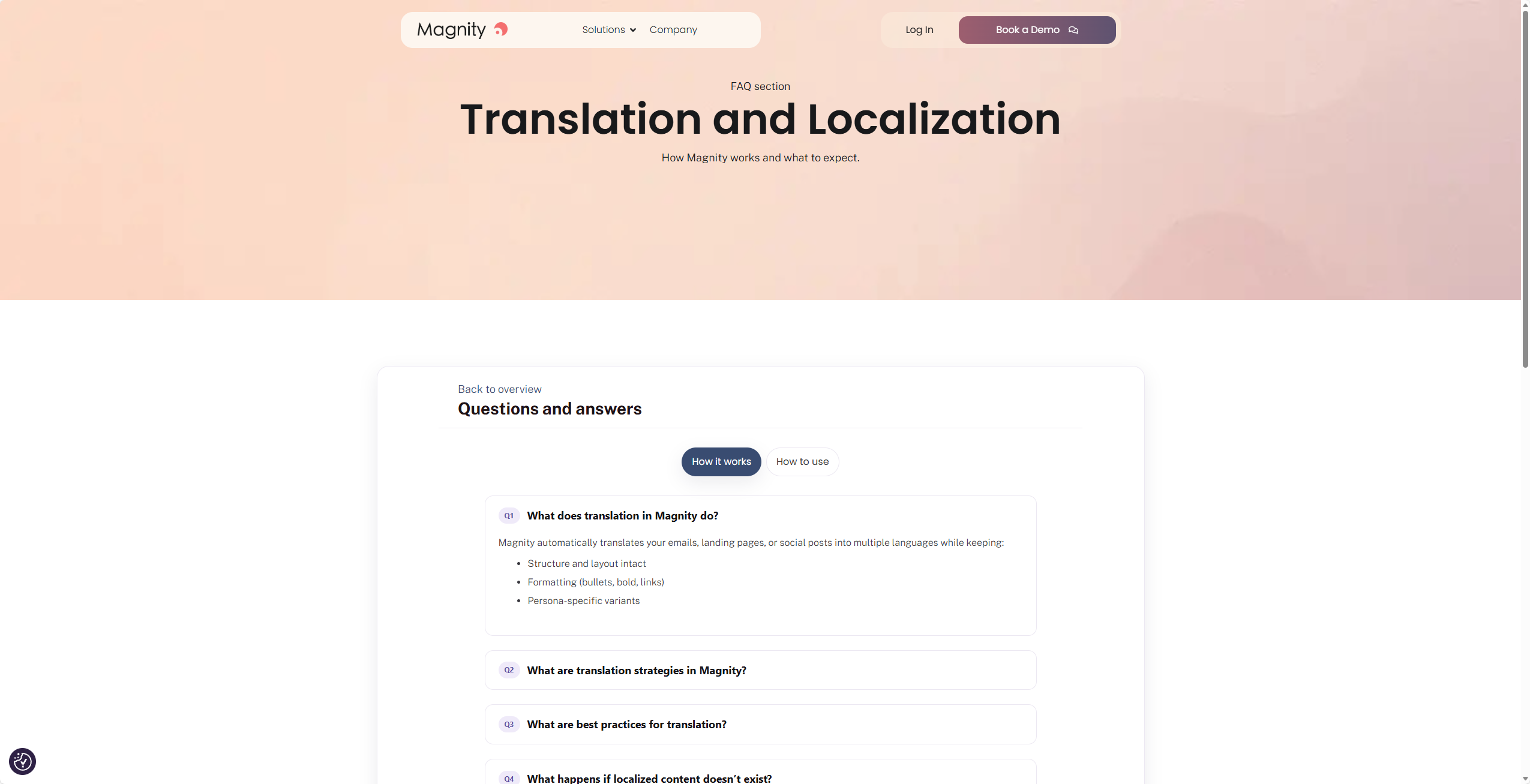This article walks through how translation works in Magnity based on three main themes shown in the tutorial:
- Translating existing email variants into multiple languages
- Automatically matching the right local pages to each language
- Refining and reviewing translated content with AI chat
The goal is to help you reuse a single email setup across several markets and personas, while keeping links and messaging aligned with each local language.
—
1. Translating email variants into multiple languages
Start by building your email as usual in Magnity. In the tutorial, the example includes:
- A basic email layout created as quickly as possible
- A persona profile added to generate personalised variants
Once you have at least one email variant (for example, per persona), you can translate it into other languages. Magnity will:
- Detect that you have multiple variants in your current email
- Generate corresponding variants in the target languages
- Keep the persona structure intact, so you can switch between personas and languages without rebuilding the email each time
After translation, you can:
- Toggle between personas to see each content version
- Toggle between languages (e.g. English, German, Korean, Spanish) to see how each variant looks per market
This means you build the logic and structure of the email once, then expand it to multiple languages with a few clicks.
—
2. Matching local destination pages automatically
A key part of multilingual email is ensuring that your links point to the correct local pages. Magnity uses your content library to understand:
- Which language each page is in
- Which modules in your email have matching content in other languages
For each module you add to the email, Magnity checks whether:
- The linked page exists in the selected target languages
- The content is valid and available for those languages (for example, German, Korean, and Spanish)
If a module has a valid local equivalent, Magnity automatically inserts that local page into the translated email.
If a module does not have a local equivalent:
- The system will return an empty module in the translated email
- You can then manually select or add a relevant local page in that language
You can also choose between translation strategies where you either translate the content and use the master URL or translate the content and use the local URL if it exist and the master URL if not.
This ensures:
- Recipients receive emails in their own language
- Links lead to matching local pages in the same language
- You avoid confusing journeys where the email is translated but the landing page is not
—
3. Refining and reviewing translations using AI chat
Once your email has been translated, you can fine-tune the content in each language using the built-in AI chat. The tutorial shows a Korean example, but the same process applies to any supported language.
Key points:
- You can chat with the AI about any element in the email (e.g. body copy, paragraphs, tone)
- You can write your instructions in any language you prefer
- Magnity will always respond in the language of the email you are editing
For example, you can say:
- “Change this to past tense and reduce it to three paragraphs.”
- “Make the tone slightly more formal.”
- “Shorten this introduction for mobile users.”
Even if you do not understand the target language (such as Korean), you can still:
- Control structural aspects like tense, length, and paragraphing
- Ensure the output follows your brief before sending it for local review
- Provide reviewers with content that is already close to the desired format and style
This workflow lets central teams manage structure and quality, while local teams focus on final linguistic and cultural checks.
—
Saving and collaborating on translated projects
When you are satisfied with your translations and adjustments, save the work as a project. For example:
- Give it a clear name (e.g. “Multimarket email – Q2 launch”)
- Save it to the relevant projects folder
From there, the project is:
- Ready to be shared with specific people
- Easy to hand over to the right departments for review and approval
Sharing and exporting options are covered in a separate article and tutorial, but the core idea is that you keep all language and persona variants in one structured project.
—
If you want to see how these steps come together in practice and discover additional possibilities, explore more content on the Magnity website.




